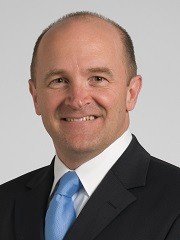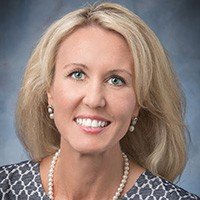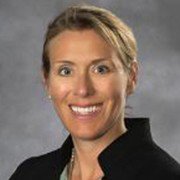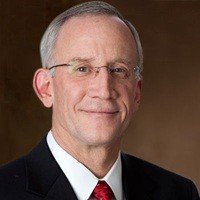How Leading Health System CFOs Are Staying Agile on the Road to Recovery
October 12, 2020
- Cost containment is a major focus for CFOs during the pandemic.
- Using rolling forecasts helps leaders quickly adjust their strategies.
- Finance leaders’ skill sets are needed to help drive innovation.
For more than a decade, Steven Glass, CFO of Cleveland Clinic, has been inspired by a quote on the wall of his home gym: “Today, I will do what others won’t, so tomorrow I can do what others can’t.”
That quote, attributed to football legend Jerry Rice, resonates for Glass as a healthcare finance leader facing the overlapping challenges of a pandemic, an economic downturn and the ongoing push to deliver higher-value care. “There’s a lot of hard work that we have to do today to be innovative tomorrow,” Glass said.
Making strategic decisions in these uncertain times can be difficult, but Glass and other CFOs are leading their organizations by creating a more performance-based culture and adopting an agile financial planning approach.

Containing costs and focusing on performance
Before the COVID-19 pandemic, Glass and his finance team at Cleveland Clinic had already been educating operational leaders on how to manage costs and improve their financial performance as the organization pivots toward value-based care.
“We can’t be successful in our industry at managing costs in a value-based environment if the frontline caregivers don’t understand what that means,” Glass said.
Managing costs while improving quality has been especially critical in a highly penetrated managed-care market like Southern California, said Karen Testman, CFO with MemorialCare. The Fountain Valley-based health system saved about $9 million in one year after rolling out hospital efficiency improvement programs (HEIPs) throughout its clinically integrated network.
For example, the system created an HEIP with its orthopedic surgeons to identify cost-saving opportunities, such as by standardizing implants. “They’ve been really motivated, and that’s been a great success for us in our initial year,” Testman said.
As MemorialCare aims to double the number of lives for which it takes financial risk during the next few years, it has strategically invested in lower-cost sites of care, such as freestanding imaging centers. The organization also has begun automating some administrative services in the revenue cycle, supply chain and human resources. These moves have put the system in a better position to weather the current downturn.
Looking ahead, leaders at MemorialCare will continue to explore such savings initiatives, Testman said

Elevating the strategic role of finance
Eighteen months ago, leaders at VCU Health System replaced their annual budgeting process with a more agile dynamic-planning approach that incorporates rolling forecasts and performance management tools. Now, leaders have a more realistic forecast that resets according to positive or negative adjustments and helps guide their strategy even in uncertain times.
“We had no idea that the pandemic would underline the need for this flexibility, but it does help us forecast the next couple of years,” said Melinda Hancock, chief administrative and financial officer.
“Because our top line is so variable right now, all we can really work on in earnest is making sure that we are nimble and understand our expenses and making sure we’re optimizing revenues,” Hancock said. The health system aims to achieve $100 million in reduced expenses or optimized revenues this fiscal year.

Another health system implementing this type of financial planning approach is Intermountain Healthcare. This spring, Intermountain’s finance leaders used their monthly cash-flow forecasts to create sophisticated short- and long-term cost restructurings across the organization, said Bert Zimmerli, executive vice president and CFO.
Zimmerli is optimistic that a dynamic-planning approach using rolling forecasts will help leaders at the Salt Lake City-based health system stay focused on their long-range goals and meet rating agencies’ expectations despite the challenges of the past year.
“I’m still a believer in five-year plans and having a real good idea where we’re going to be, having those targets, maintaining strong relationships with the ratings agencies and letting them know what they can expect of us,” he said.
“They understand this year is almost a throwaway year, if you will. But they’re going to expect us to be back on track.”

Lessons learned during a time of turmoil
The four CFOs offer the following advice for how finance leaders can guide their teams and partner with operational leaders on recovery strategies in the months ahead.
Make every operational leader accountable. “As a CFO, don’t let yourself be the only person responsible for the budget,” Zimmerli said. He meets every month with Intermountain’s CEO, chief medical officer and chief nursing officer to review financials and promote accountability across the organization. His team also works to build solid relationships with operational leaders and offer coaching when needed to help improve their performance.
Engage physician leaders in strategic planning and continuous performance improvement. MemorialCare created a society of physician leaders who help drive clinical outcomes and performance across the health system. The physician society reports directly to the board and helps the organization adopt best practices and achieve positive clinical and financial results, Testman said.
Know where you stand. Robust financial performance reporting allows Glass of Cleveland Clinic to make the most of daily leadership huddles, during which the day’s surgical cases, patient safety issues and financial performance across the enterprise are discussed. “We know what our revenue is every single day,” he said.
Recognize and build on your achievements. Finance leaders are staying optimistic by focusing on what they have achieved so far during the pandemic and recognizing that their skills are needed now more than ever. Hancock has been inspired by the innovative changes that leaders at VCU Health System have made to implement remote care and rethink their traditional bricks-and-mortar services this past year.
“When you think about the speed and magnitude of the decision-making that we’ve had to do,” she said, “it’s like bringing all the different skill sets that we’ve learned over our careers together at once.”